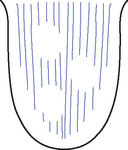Chapter 23 Some medicines affect the appearance of the tongue and the most common ones are antibiotics. These tend to make the tongue partially peeled, that is, the loss of small patches of coating. Therefore, when I see such a tongue, the first thing I ask is whether the patient is on antibiotics or has taken them recently (Fig. 23.1). In my experience, the effect of the antibiotics on the tongue lasts for about 2 weeks after stopping the course. Judging from the effects of antibiotics on the tongue, we can deduce that they injure Stomach-Yin.
 TONGUE DIAGNOSIS
TONGUE DIAGNOSIS
CONDITIONS FOR EXAMINING THE TONGUE
External factors affecting the colour of the tongue
Medicines
![]()
Stay updated, free articles. Join our Telegram channel

Full access? Get Clinical Tree


TONGUE DIAGNOSIS

